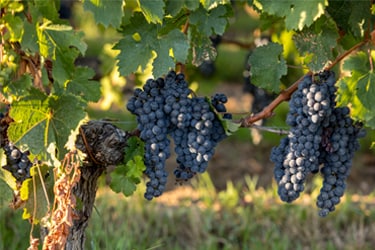Food Contamination
Food Contamination
One of the major food safety concerns lies with contaminants, be it chemical, biological or physical substances. The exposure to these toxic contaminants could result in adverse human effects. Therefore, global food safety limits, standards and regulations have been established to ensure safe levels in food worldwide.

According to World Health Organization (WHO) report, it is expected there are almost 600 million patients suffered from disease cases after eating contaminated foods. Foods containing harmful microorganisms or chemical substances causes more than 200 diseases such as diarrhea and cancers.
Polychlorinated biphenyls (PCBs) are classified as Persistent Organic Pollutants (POPs) by Stockholm Convention and Pyrrolizidine alkaloids (PAs) are potentially carcinogenic plant metabolites. Exposure to these compounds in food or beverages is a possible long-term concern for human health.
Shimadzu provides the application to monitor these cases using Mass spectrometry technologies.

While vet drugs enhance the growth of cattle and livestock, they could reside and accumulate in the animal and ultimately enter the food chain. At harmful levels, human health could be compromised.
There is a need for highly sensitive and rapid techniques for the analysis of multiple vet drugs in meat and food products. In all, to ensure that these drugs found in food are within the safe and permitted levels.

The incorrect usage and inappropriate type of toxic pesticides could lead to residual pesticides on food and possible agriculture run-off.
Regulatory and testing laboratories must monitor a wide list of targeted pesticides and detect at low and even ultra-trace levels with high precision to ensure food safety.
For a faster and more accurate solution, monitor pesticides with Shimadzu’s analytical instruments

At high concentrations, heavy metals are toxic and harmful to human and the environment. Heavy metal poisoning may occur when we ingest these contaminated food and water. Determination of heavy metals is essential and commonly conducted using AAS, ICP-OES and ICP-MS.

Mycotoxins are categorized for natural toxins (e.g. aflatoxin, patulin deoxynivalenol) commonly found in grains, dried fruits and spices. Their presence in food and feed could affect human health and cause adverse health effects.
With Shimadzu mycotoxin screening system and LC-MS/MS method package, it conveniently determine and quantify mycotoxins with high sensitivity and resolution.

As the frequency and intensity of wildfires increases around the world, smoke taint has become a growing global concern for winemakers. When grapes are exposed to smoke in a vineyard due to a nearby forest fire, volatile phenols like guaiacol and 4-methylguaiacolcan permeate the grape skin, bond with the sugars (glycosylation), and accumulate inside the grapes. Due to their reduced volatility, the resulting glycosides can no longer be detected by smelling or tasting the grapes. However, fermentation breaks down those bonds again and the released compounds often give the wine a burnt or “ashtray” flavor.



